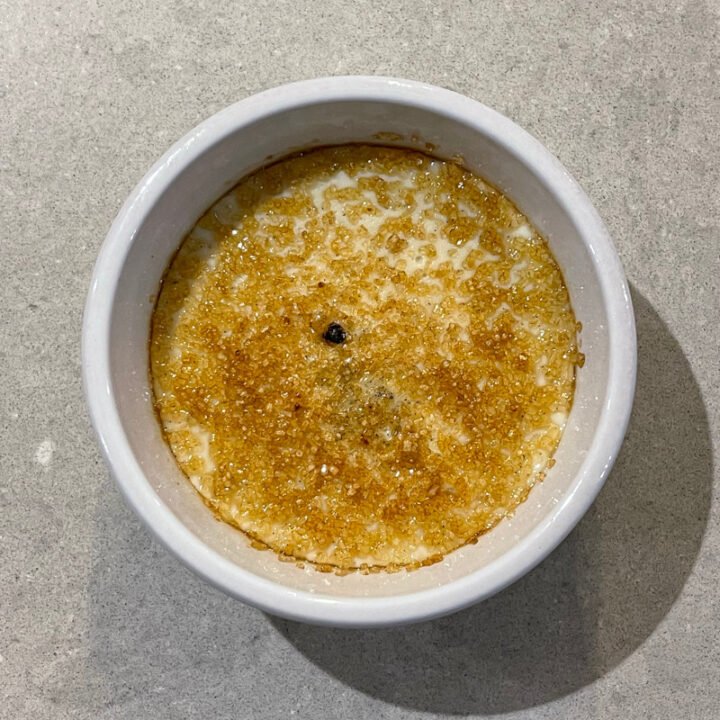
Unbelievably Creamy Vegan Crème Brûlée That’ll Fool Any Dessert Lover!
Discover how to make an indulgent, creamy Vegan Crème Brûlée with a perfectly caramelised sugar top. This plant-based twist on the French classic is silky, rich, and surprisingly easy to make at home.
Ingredients
- 200ml soya milk
- 100ml soya cream
- 5g corn flour
- 1 vanilla pod
- 25g golden caster sugar
- 1g agar agar powder
Instructions
- Lay the vanilla pod on a board and slice lengthwise through the middle with a sharp knife to split it in two. Use the blade tip to scrape the tiny seeds into the cream mixture. Drop the vanilla pod in a bowl with the cornstarch, the golden caster sugar and the agar agar. Mix the ingredients, then dilute with soy milk and soy cream.
- Pour into a saucepan and bring to high heat for 5 minutes, whisking constantly. Bring to a boil for 1 minute.
- Divide the cream into two crème brûlée containers and leave to set in the fridge for at least one hour.
- Sprinkle cane sugar evenly over the entire surface as well as the border. Use a kitchen torch to make the sugar crust, or put them in the oven for a few minutes in grill mode at 210°C.
Nutrition Information:
Yield: 2 Serving Size: 1Amount Per Serving: Calories: 219Total Fat: 10gSaturated Fat: 4gTrans Fat: 0gUnsaturated Fat: 4gCholesterol: 17mgSodium: 55mgCarbohydrates: 22gFiber: 3gSugar: 17gProtein: 10g
The Story and Science Behind Vegan Crème Brûlée
Crème brûlée is one of those desserts that instantly elevates any meal—it’s sophisticated, indulgent, and steeped in history. Translating to “burnt cream” in French, this iconic dessert dates back to at least the 17th century, though its true origins are hotly debated. France, England, and Spain all claim the title of the first custard with a caramelised sugar crust. While the French version, popularised by François Massialot’s 1691 cookbook Cuisinier royal et bourgeois, is the most famous, versions like the English Trinity Cream and the Spanish Crema Catalana suggest a shared culinary ancestry.
From Classic to Compassionate: The Rise of Vegan Crème Brûlée
Traditionally, crème brûlée is made from egg yolks, heavy cream, and sugar, but modern vegan adaptations achieve the same lush texture without animal products. The secret lies in clever plant-based substitutions: coconut cream for richness, soy or oat milk for smoothness, and cornstarch or silken tofu for setting. When blended and baked gently, the result is a custard that’s just as indulgent as the original—creamy, golden, and finished with that signature burnt sugar shell.
The magic moment, of course, comes at the end: when you tap your spoon on the glossy, glass-like surface and it gives way to the velvety custard beneath. That sensory contrast is what makes crème brûlée so addictive—and mastering it at home is easier than most people think.
A Bit of History and Trivia
The earliest recorded crème brûlée recipe dates back to France’s royal courts, where it was served to impress nobility with its dramatic flaming finish. In England, Trinity College, Cambridge, adopted the dessert as its own in the 1800s, branding it with the college crest using a heated iron. Spain’s Crema Catalana, on the other hand, is traditionally flavoured with citrus zest and cinnamon rather than vanilla.
A fun modern twist? In 2001, Parisian chefs reportedly created a giant crème brûlée weighing over 100 kilograms for Bastille Day celebrations—a Guinness-worthy feat if ever there was one!
Nutritional Notes: Light Indulgence with Plant-Based Benefits
A classic crème brûlée is delicious but undeniably heavy in saturated fat and cholesterol. By contrast, a vegan crème brûlée can deliver all the creamy satisfaction with far less guilt. Using coconut or oat milk introduces healthy fats and dietary fibre, while ditching the eggs means zero cholesterol. Depending on your recipe, you can also reduce sugar by using maple syrup or coconut sugar, which lend a lovely depth of flavour.
For an extra nutritional boost, adding a pinch of turmeric gives the custard a warm, golden hue and a hint of antioxidant goodness. Vanilla—whether from a pod or pure extract—provides both aroma and comfort, enhancing the dessert’s sensory appeal.
Tricks for the Perfect Crusty Top
Getting that glassy, caramelised sugar crust is part art, part science. Here are a few expert tricks to nail it every time:
- Use the right sugar: Fine caster sugar melts more evenly than granulated sugar. For a deeper amber tone, try a light brown or demerara sugar blend.
- Dry the surface: Make sure your custard is completely chilled and dry before torching—moisture prevents proper caramelisation.
- Torch technique: Hold the kitchen torch about 2–3 inches away and move in circular motions to melt the sugar gradually. Don’t stay too long in one spot!
- Double layer trick: For an extra crunchy finish, caramelise one layer, let it cool, then sprinkle another thin layer of sugar and torch again.
If you don’t own a kitchen torch, you can caramelise the top under a hot grill—but watch closely, as it can burn in seconds.
Final Thoughts
Crème brûlée has travelled centuries and continents, and the vegan version proves that culinary traditions can evolve beautifully without compromise. Whether you’re serving it at a dinner party or enjoying it solo, this dessert captures the best of both worlds—classic French flair and modern plant-based creativity.
If you loved this Vegan Crème Brûlée, explore more elegant vegan desserts like my Dark Chocolate Mousse or creamy Rhubarb Panna Cotta. For more on custard history and caramelisation science, check out the detailed article from Serious Eats.


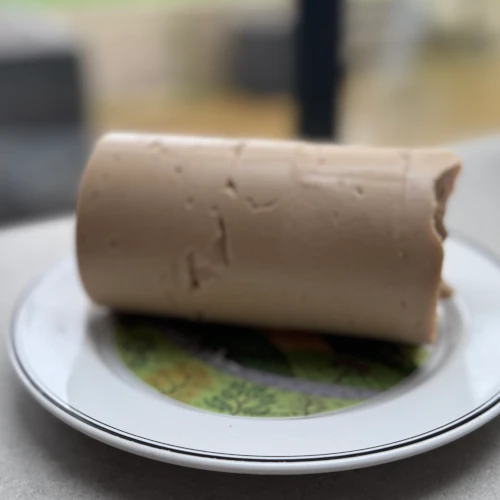

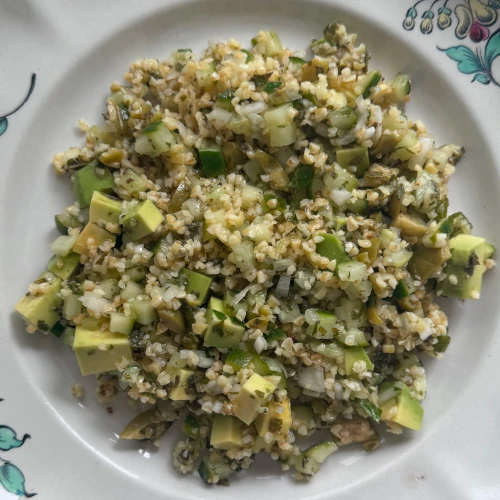
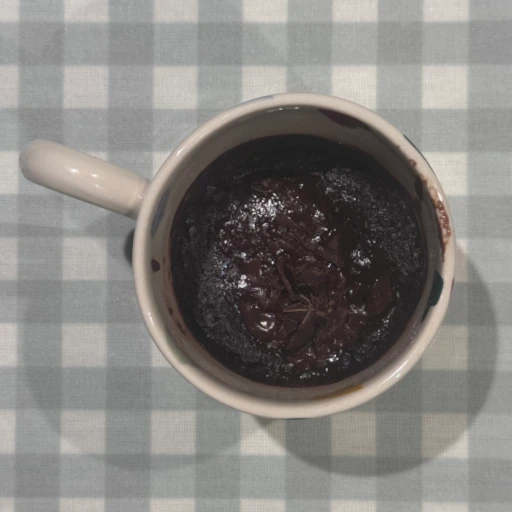
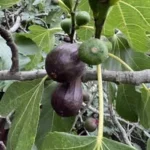

[…] Crème Brûlée – silky, creamy, and topped with a perfect crackly caramel […]